Bioenergy and Biomass Statistics By Facts And Trends (2025)

Updated · Aug 21, 2025

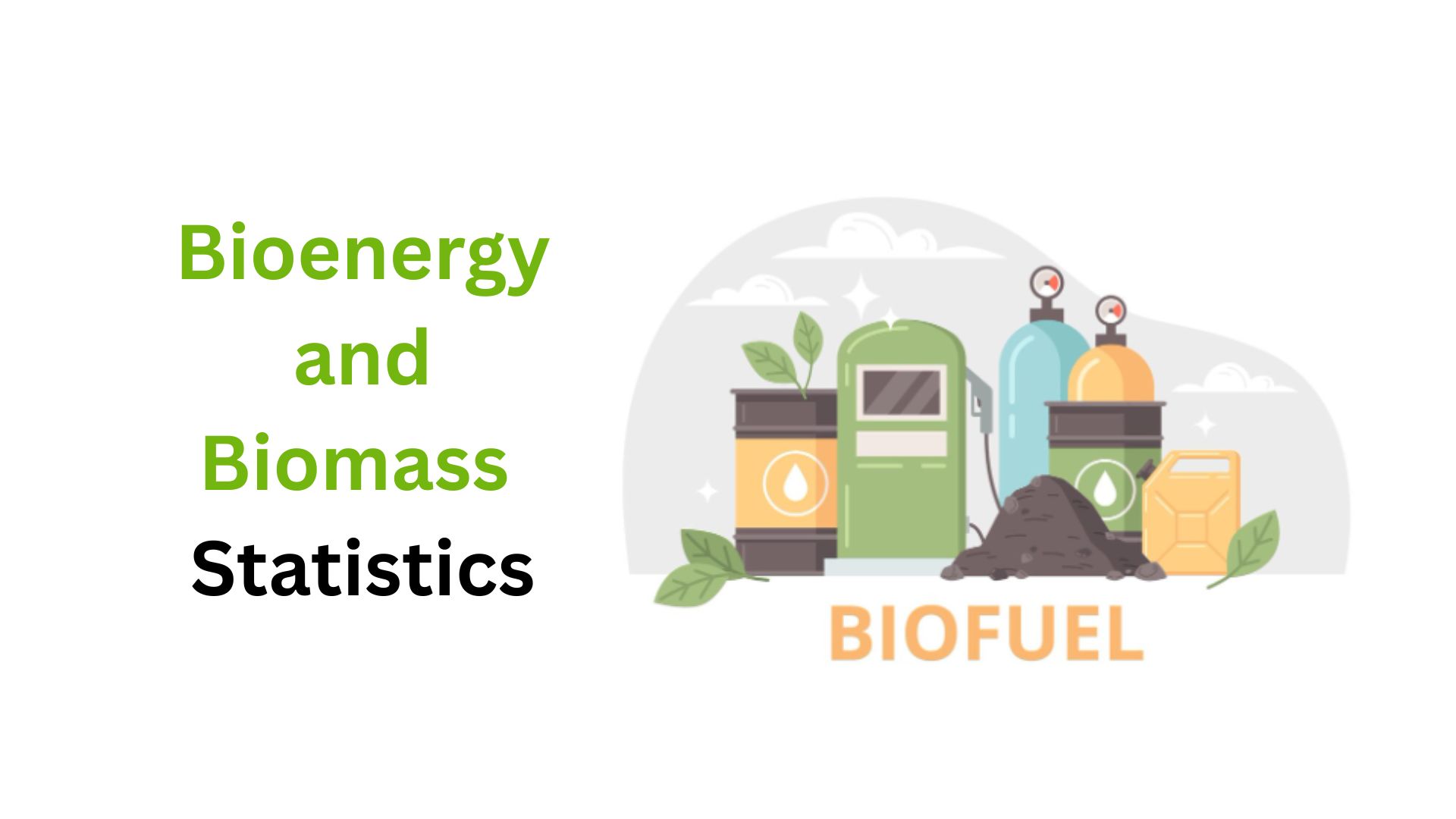
WHAT WE HAVE ON THIS PAGE
Introduction
Bioenergy and Biomass Statistics: When I say renewable energy, solar and wind usually get all the attention. But if you dig into it, you’ll see that these bioenergy and biomass statistics tell a very different story. Biomass from crops, forests, and even waste still provides a big share of the world’s energy, and the market around it is only getting bigger.
This isn’t just about burning wood like in the old days. Today, bioenergy means billion-dollar industries, thousands of power plants, and huge potential for the future. At the same time, there are challenges like deforestation and the health risks of traditional biomass use. That’s why in this article, I’ll walk you through the real picture of bioenergy and biomass statistics from its roots, so you can see how important it still is in the global energy story. Let’s get into it.
Editor’s Choice
- Bioenergy is one of the oldest energy sources, with humans burning wood and organic matter for thousands of years. Today, it’s modernized into biogas, biofuels, and biomass power.
- Global bioenergy consumption in 2023 was about 39.5 exajoules, nearly 9% of the world’s 445 EJ energy use.
- Modern bioenergy makes up around 55% of the renewable energy supply worldwide.
- The U.S. in 2023 consumed 4,978 trillion BTU of biomass energy, nearly 5% of its primary energy. Biofuels led the mix with 53%, wood 39%, and waste/manure 8%.
- The global bioenergy market in 2024 ranges between $145 billion and $296 billion, depending on the source, with CAGR forecasts of 7 to 8% into 2029 to 2033.
- Biomass electricity alone is valued at $55.4 billion in 2024, expected to grow to $72.8 billion by 2029.
- Bioenergy investment is expected to rise 13% in 2025, reaching $16 billion.
- The UK’s Drax biomass plant burns 7 million tonnes of pellets annually, generating 4% of national electricity, but has received £7 billion in subsidies.
- Indonesia and South Korea are linked to deforestation issues, with 60% of deforested Indonesian biomass exports going to South Korea.
- Biomass supply potential in 41 countries is currently 1.32 billion dry tonnes, projected to hit 2.13 billion by 2030, a 60% growth.
- There are nearly 5,000 biomass power plants worldwide today, producing 83.8 GW of capacity. Forecasts suggest almost 6,000 plants and 96.8 GW by 2033.
- Biomass electricity production is expected at 21 billion kWh in 2025, dipping slightly to 20.7 billion kWh in 2026.
- Health impacts remain serious, as nearly 2 billion people still rely on traditional biomass cooking, causing about 3 million premature deaths yearly.
- Sustainability challenges include deforestation, land-use change, and emissions from transporting biomass over long distances.
| Topic | Statistic / Fact |
| Origin |
The oldest energy source, wood and waste burning for heat and cooking |
|
Global Consumption (2023) |
39.5 EJ (9% of global 445 EJ) |
| Renewable Share |
Modern bioenergy 55% of global renewable energy |
|
U.S. Biomass Use (2023) |
4,978 trillion BTU (5% of U.S. energy) |
| U.S. Breakdown |
Biofuels 53%, Wood 39%, Waste 8% |
|
Global Market Value (2024) |
$145 to 296 billion (CAGR 7 to 8% up to 2029 to 2033) |
| Biomass Electricity Value |
$55.4 billion (2024), $72.8 billion (2029) |
|
Investment Forecast (2025) |
$16 billion (+13% growth) |
| UK Case Study (Drax) |
7M tonnes of biomass burned annually, 4% UK electricity, £7B subsidies |
|
Indonesia/South Korea Issue |
60% of deforested biomass exports from Indonesia have gone to South Korea since 2021 |
|
Biomass Supply (41 countries) |
1.32 billion dmt now 2.13 billion by 2030 (60% growth) |
| Power Plants (2024) |
4,971 plants, 83.8 GW capacity |
|
Power Plants (2033 Forecast) |
5,980 plants, 96.8 GW capacity |
| Electricity Production (2025) |
21 billion kWh |
|
Traditional Biomass Impact |
2B people rely on it, 3M deaths yearly |
| Key Sustainability Concerns |
Deforestation, biodiversity loss, carbon neutrality doubts, and transport emissions |
Origin and History of Bioenergy and Biomass
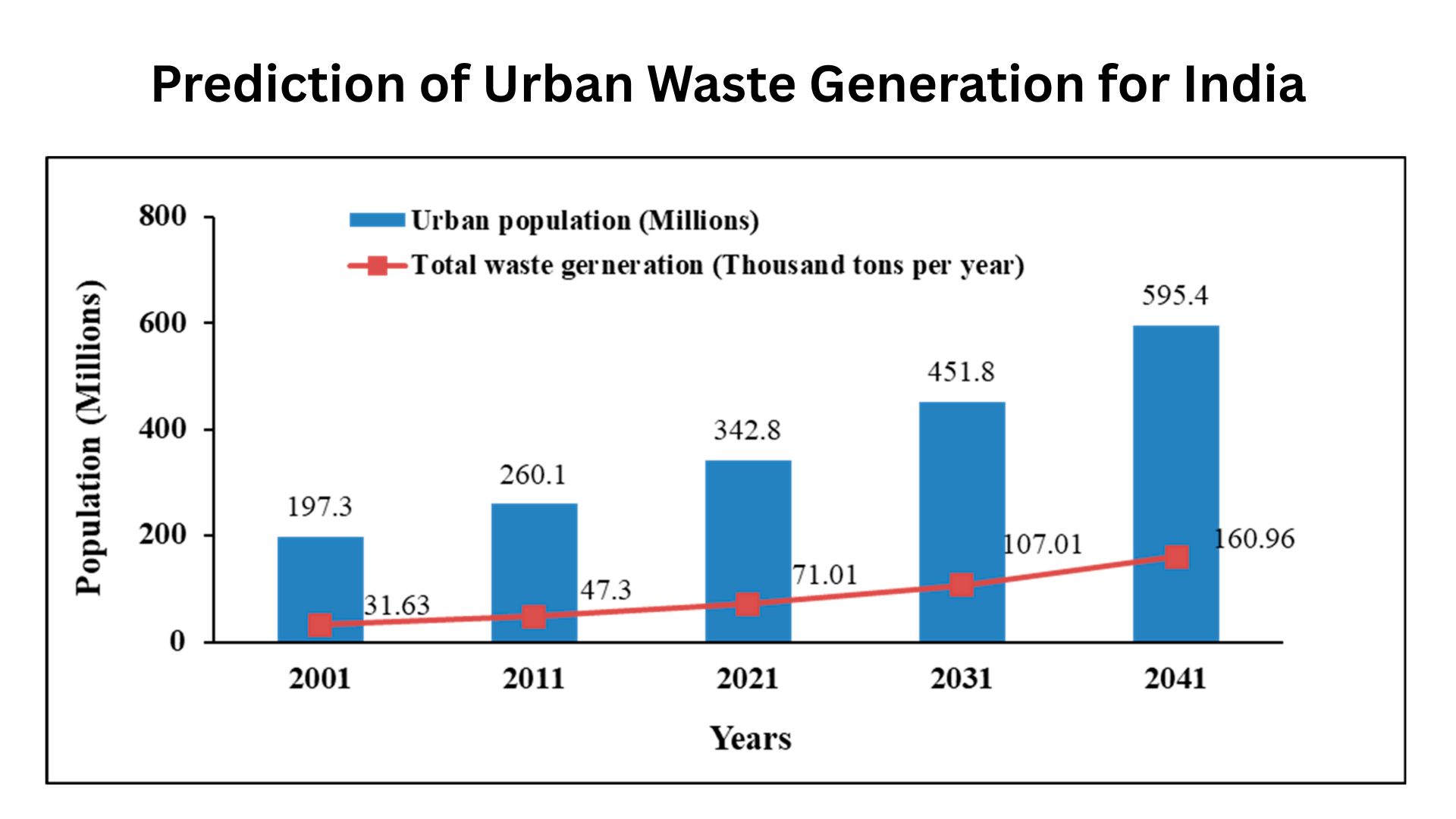
- Way back, humans burned organic stuff like wood for cooking and warmth; that’s probably the oldest energy use.
- Modern uses like biogas and biofuels only took off in recent decades, especially with the push for clean energy.
| Era | Highlight |
| Ancient times | Burning biomass (wood, animal dung) for heat and cooking |
| Modern era (20th c.) | Emergence of biogas, biofuels, and commercial bioenergy |
Scale Today, Global Numbers for Bioenergy and Biomass Statistics
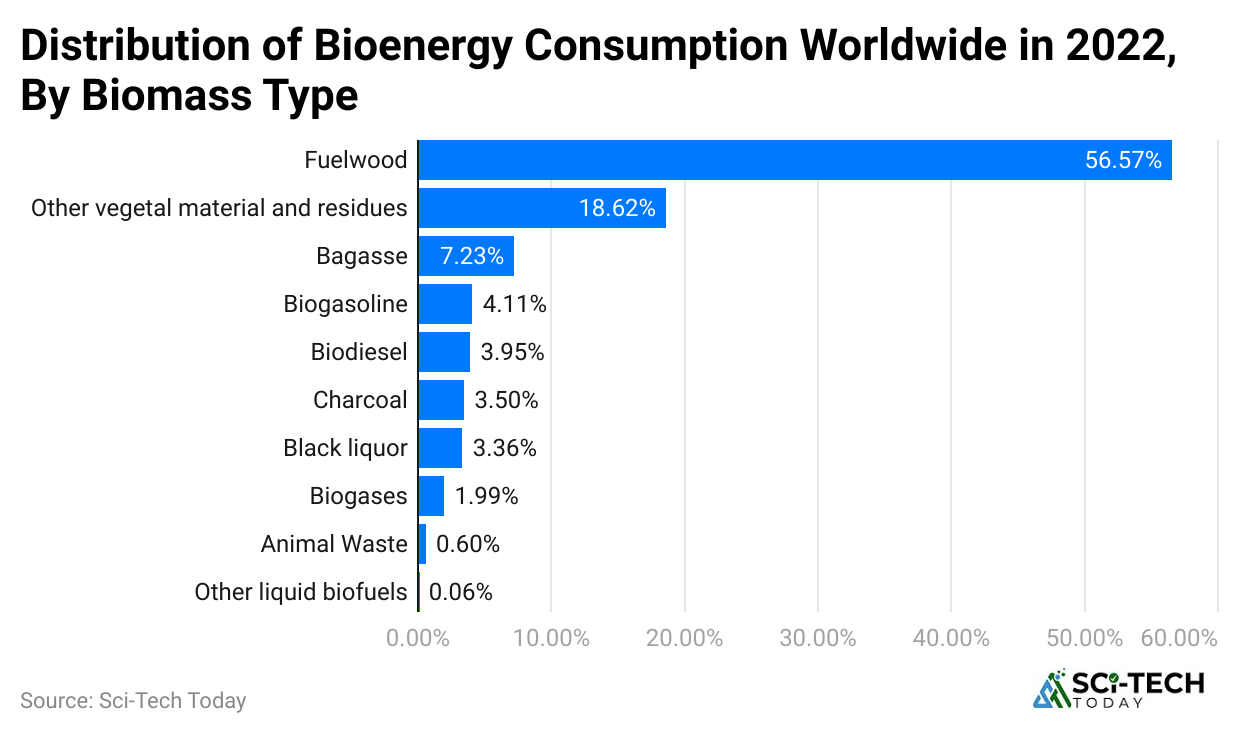
- In 2023, world bioenergy consumption hit around 39.5 exajoules (EJ), which was about 9% of global energy use (445 EJ).
- Another source says modern bioenergy contributes over 6% of global energy supply and nearly 55% of all renewable energy, excluding traditional biomass.
- In the U.S. in 2023, biomass accounted for roughly 5% of total primary energy use, about 4,978 trillion BTU. Biofuels made up 2,662 TBtu (53%), wood and wood waste 1,918 TBtu (39%), and waste/manure/sewage the remaining 398 TBtu (8%).
| Region | Metric | Value |
| Global | Bioenergy share of total energy | 9% (39.5 EJ of 445 EJ) |
| Global | Modern bioenergy’s share of renewables | 55% of renewable energy |
| U.S. (2023) | Biomass share of energy consumption | 5% (4,978 TBtu) |
Market Size and Growth Trends
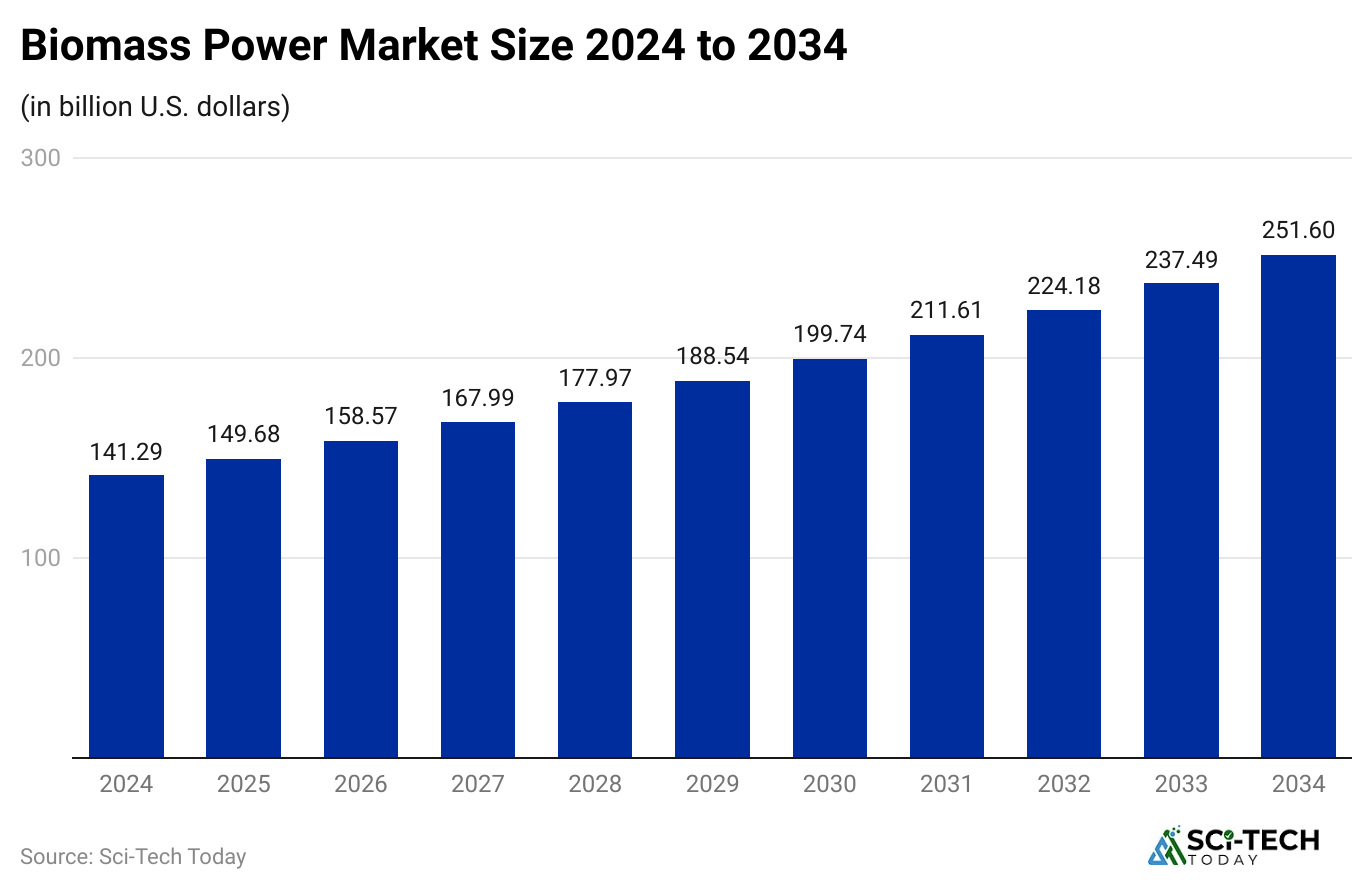
- The global bioenergy market was valued at about USD 145.64 billion in 2024, expected to reach USD 156.86 billion in 2025, and USD 283.94 billion by 2033 with a CAGR of 7.7%.
- Another source pegs the broader bioenergy market at USD 296.09 billion in 2024, growing to USD 320.81 billion in 2025, and USD 465.22 billion by 2029 with a CAGR of 8.3%.
- Specifically for biomass electricity, the market was about USD 55.43 billion in 2024, rising to USD 58.31 billion in 2025, and forecasted to hit USD 72.78 billion by 2029 with a CAGR of 5.2%.
| Market Segment | 2024 Value (USD billion) | 2025 Forecast (USD billion) | CAGR (to 2029/33) |
| Bioenergy (Source A) | 145.6 | 156.9 | 7.7% (to 2033) |
| Bioenergy (Source B) | 296.1 | 320.8 | 8.3% (to 2029) |
| Biomass Electricity | 55.4 | 58.3 | 5.2% (to 2029) |
Investments and Policy
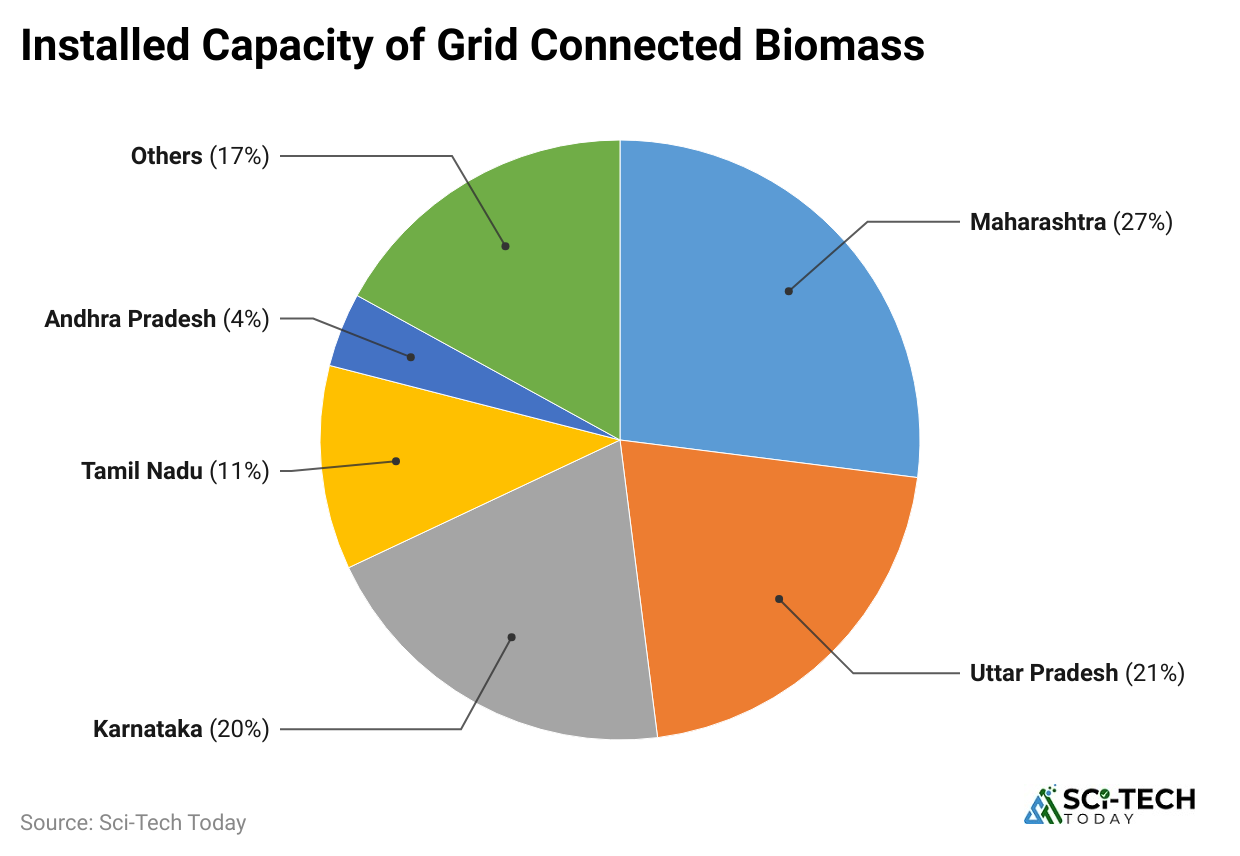
- The International Energy Agency (IEA) projects that bioenergy investments will increase by about 13% in 2025, hitting a record USD 16 billion.
- Policy matters: In the UK, the Drax biomass plant burns 7 million tonnes of pellets annually and supplies nearly 4% of the UK’s electricity, yet critics question its carbon claims and subsidies (over £7 billion so far).
- In South Korea, more than 60% of wood pellets from deforested Indonesian forests since 2021 have gone there, sparking legal and sustainability concerns.
- Similarly, Indonesia’s forests are being cleared rapidly to meet rising biomass demand from South Korea and Japan.
| Topic | Detail |
| Investment outlook | Bioenergy investment +13% in 2025, USD 16 billion |
| UK case study | Drax plant 7 M tonnes biomass; 4% of electric supply; £7 bn subsidies |
| SK / Indonesia concern | 60%+ of Indonesia’s deforested biomass exports since 2021 shipped to South Korea |
| Sustainability worry | Indonesia’s forests are under pressure to meet bioenergy demand |
Biomass Supply Potential
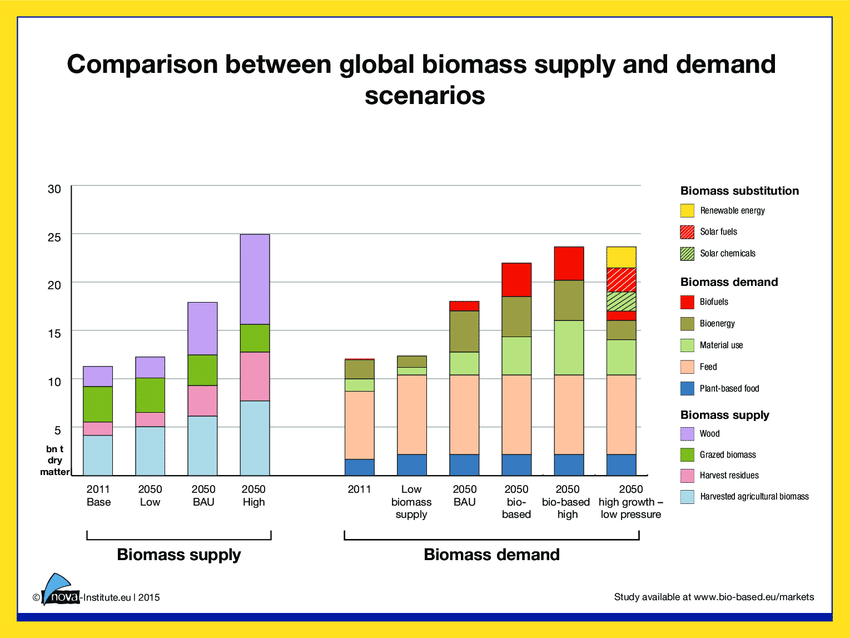
- Among 41 countries with data, the current biomass resource potential is about 1.32 billion dry metric tonnes; projected to grow to 2.13 billion by 2030, a 60% increase.
- The U.S. and Indonesia are expected to lead this growth U.S. from crop residues and energy crops, and Indonesia from palm oil waste and rice hulls.
| Region/Country | Current Supply (billion dmt) | Projected 2030 (billion dmt) | Growth Rate |
| Total (41 countries) | 1.32 | 2.13 | 60% |
| U.S. | Leading (crop residues, etc.) | ||
| Indonesia | Leading (palm oil, hulls, etc.) |
Electric Capacity and Generation
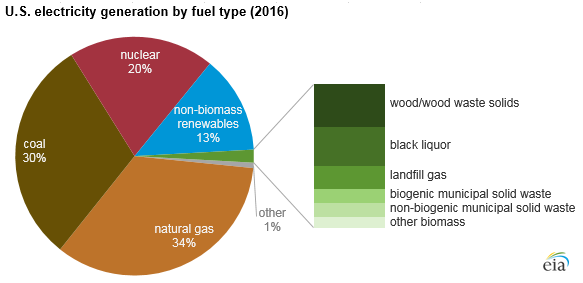
- In early 2024, there were roughly 4,971 biomass power plants globally, totaling around 83.8 GW of capacity. Projected to reach 5,980 plants and 96.8 GW by 2033.
- In terms of actual electricity production, biomass is expected to generate about 21 billion kWh in 2025 and slightly less (20.7 billion kWh) in 2026.
| Metric | Value / Forecast |
| Plants (2024) | 4,971 |
| Capacity (2024) | 83.8 GW |
| Capacity (2033) (forecast) | 96.8 GW (6,000 plants) |
| Generation (2025) | 21 billion kWh |
| Generation (2026) (forecast) | 20.7 billion kWh |
Environmental and Sustainability Considerations
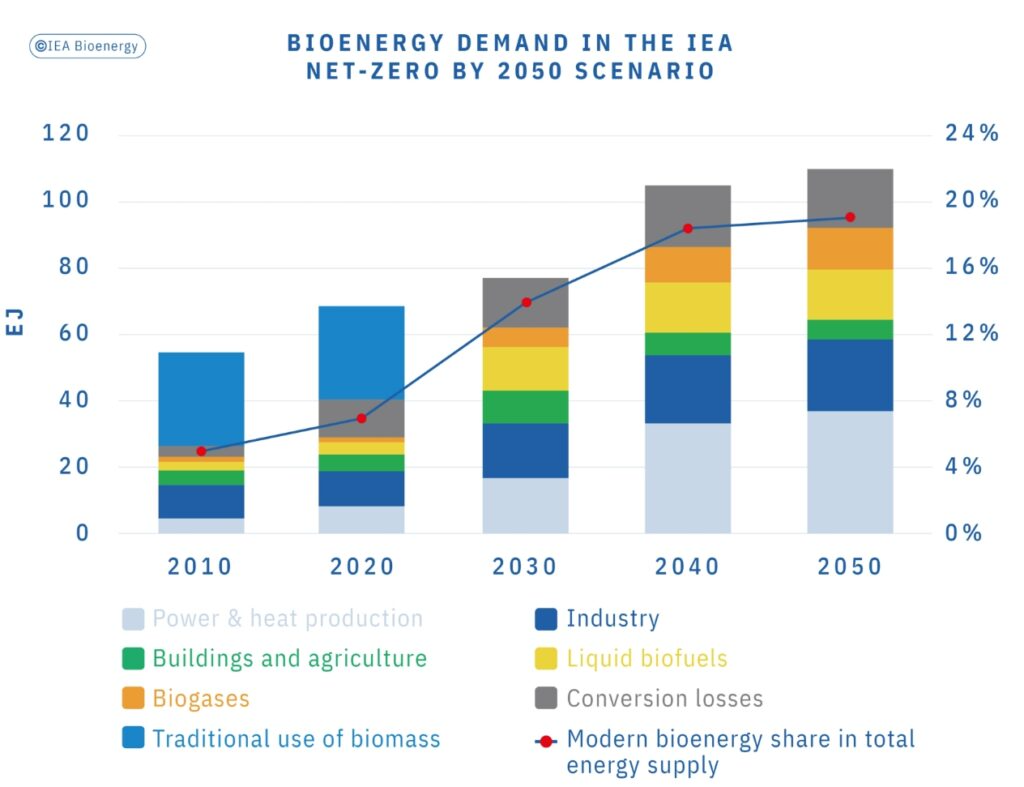
#1. Modern bioenergy is considered near-zero-emission if biomass regrowth matches carbon release, but traditional biomass (open fires, inefficient stoves) is harmful and still used by 2 billion people, causing nearly 3 million deaths in 2023.
#2. Land-use impacts are important: clearing forests for biomass (e.g., in Indonesia) can seriously harm biodiversity and the climate balance. There’s ongoing criticism of long-distance biomass transport and uncertainties about true carbon neutrality.
- Modern bioenergy: low net-carbon if sustainably managed.
- Traditional biomass: major health risks and pollution; still widely used (2 bn people).
- Land-use risks: deforestation, long regrowth timelines, and biodiversity loss.
- Transport footprint: hauling biomass over long distances is often criticized.
Conclusion
Looking at all these bioenergy and biomass statistics, it’s clear that this sector is still a big part of the global energy mix. The numbers show steady growth, billions of dollars in investment, and a future that could expand even more as countries push for cleaner energy. But the stats also remind us of the challenges, like the health risks from traditional biomass and the environmental impact of large-scale production.
In the end, bioenergy isn’t just burning firewood anymore; it’s a modern industry shaping how we balance energy, environment, and economics. And as the figures keep climbing, it’s worth keeping an eye on how bioenergy and biomass will influence the world’s energy future. I hope you like this article.If you have any questions, let me know in the comment section.
Sources
FAQ.
Bioenergy is the energy produced from biomass, which is organic material like wood, crops, waste, and residues. When biomass is burned or converted, it becomes heat, electricity, or fuel.
Common biomass types include wood residues (sawdust, wood chips), agricultural leftovers (straw, husks), energy crops (like switchgrass or miscanthus), animal manure, and food or industrial waste.
Bioenergy can be near-zero carbon if biomass regrowth matches carbon emissions. But poorly sourced or transported biomass may undermine this due to emissions and regrowth delays.
Bioenergy offers solutions via liquid biofuels where electrification is tough. Liquid fuels like advanced biofuels or biomethane can power planes and ships, bridging gaps made by solar or wind.
There are around 4,971 biomass power plants globally, totaling 83.8 GW capacity in 2024, expected to grow to 96.8 GW by 2033. Electricity generation from biomass is projected at 21 billion kWh in 2025, slightly declining to 20.7 billion kWh in 2026.
The bioenergy market is estimated to be between $145 billion and $296 billion in 2024, with an expected growth rate (CAGR) of 7 to 8% over the next several years. Biomass electricity specifically was around $55.4 billion, rising to $72.8 billion by 2029.
Many feedstocks come from residues or purpose-grown energy crops. But concerns remain about deforestation, sustainability standards, transport emissions, and land competition for food or conservation.

Barry is a technology enthusiast with a passion for in-depth research on various technological topics. He meticulously gathers comprehensive statistics and facts to assist users. Barry's primary interest lies in understanding the intricacies of software and creating content that highlights its value. When not evaluating applications or programs, Barry enjoys experimenting with new healthy recipes, practicing yoga, meditating, or taking nature walks with his child.









